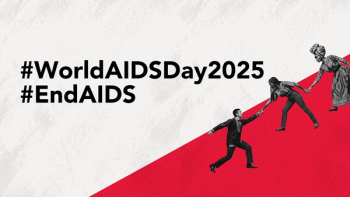A new study published in JAMA Network Open reveals that racial and ethnic disparities in outpatient COVID-19 antiviral treatment are substantial and are largely driven by structural and encounter-level healthcare access factors. These include how patients are diagnosed, the availability of virtual care, and where care is delivered.
Researchers examined electronic health records from 201,964 adults who tested positive for COVID-19 between January 2022 and January 2024 in a large northeastern US health system. The analysis showed that Black patients were 10.8 percentage points less likely, and Latino patients 9.8 percentage points less likely, than White patients to receive timely antiviral prescriptions—specifically nirmatrelvir/ritonavir (Paxlovid) or molnupiravir—within seven days of testing positive.
Rebecca Bromley-Dulfano, MS, and MD candidate at Stanford University School of Medicine, and PhD candidate at Harvard University, coauthored the study. In an email interview, she explained that the type of COVID-19 test used was a key factor affecting timely treatment.
“Our results suggest that access to rapid antigen tests, particularly home tests, played a meaningful role in facilitating timely COVID treatment,” Bromley-Dulfano said. “Black and Latino patients were less likely to use these tests, which may have contributed to delays in diagnosis and care. Rapid tests can reduce care fragmentation by allowing for real time decision making, whereas PCR tests often involve longer turnaround times that may delay prescribing. While PCR testing remains important, expanding access to home testing may be a practical step toward improving treatment equity.”
The study employed nested linear probability models to estimate the contribution of various clinical, social, and system-level factors to racial disparities in treatment. After adjusting for comorbidities, demographics, vaccination status, insurance, and language, researchers found that 53% of the treatment gap for Black patients and 39% for Latino patients could be explained by encounter-level differences, including diagnostic method, site of care, and use of virtual visits.
The authors noted that Black and Latino patients were significantly less likely to use virtual care or secure messaging platforms compared to White patients. Bromley-Dulfano emphasized the role this plays in access to timely prescriptions.
What You Need To Know
Black and Latino patients were 10.8 and 9.8 percentage points less likely, respectively, to receive timely outpatient antiviral prescriptions than White patients.
Over half of the treatment disparity for Black patients and nearly 40% for Latino patients was explained by encounter-level factors such as test type and virtual care use.
Bromley-Dulfano emphasized that expanding access to home testing and investing in telehealth infrastructure in underserved clinics could meaningfully reduce racial treatment gaps.
“We found that Black and Latino patients were significantly less likely to use virtual visits or patient portal messaging—visit encounter types that were more likely to result in treatment. This could reflect various barriers like differences in how clinics deliver care, digital literacy, or limited technology/internet access. Clinics serving higher proportions of Black and Latino patients used virtual care and rapid testing less frequently, suggesting structural differences in clinic capacity.”
She added that addressing these issues requires not only individual-level interventions but system-wide changes, “We hope sharing this kind of evidence can help guide targeted health system-level support for practices serving more underserved populations. Expanding virtual care access more broadly (e.g. investing in technology, training, and workflow integration) may also have the added potential to more broadly reduce inequities in access to care for patients who face logistical barriers related to transportation, work schedules, or caregiving responsibilities.”
The study concludes that while clinical characteristics do play a role in prescription disparities, structural differences in healthcare delivery account for a sizable share—and are potentially modifiable. Bromley-Dulfano stressed the policy implications of the findings.
“Our findings suggest that roughly half of the observed disparity could be addressed through health system–level interventions. Because the contribution of these factors is so large, we think this suggests that healthcare providers should take action. Policy interventions that expand access to home testing and invest in virtual care infrastructure—particularly in clinics serving a high percentage of Black and Latino patients—could meaningfully reduce these gaps.”
Ultimately, the researchers argue that equitable COVID-19 treatment requires structural investments in healthcare infrastructure. As Bromley-Dulfano noted, “Ensuring all clinics are equipped to respond quickly and consistently to COVID-19 cases is essential to equitable care delivery.”
Reference
Bromley-Dulfano R, Barnett ML. Racial Inequities and Access to COVID-19 Treatment. JAMA Netw Open. 2025;8(7):e2518459. Accessed July 9, 2025. doi:10.1001/jamanetworkopen.2025.18459


















































































































































































































































































